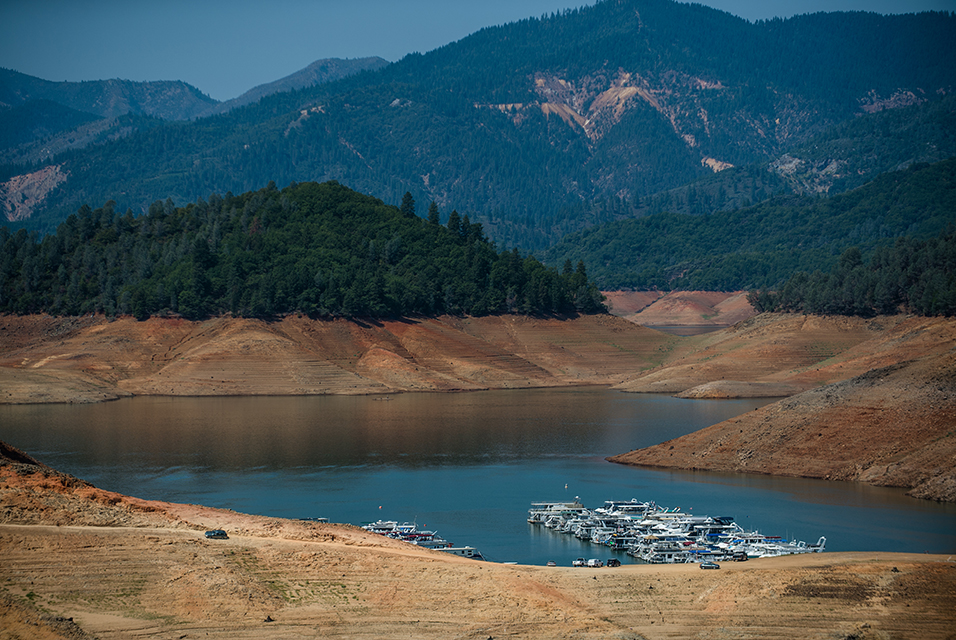RALEIGH, NC.- Drought can mean restrictions for watering the lawn, crop losses for farmers and an increased risk of wildfires. But it can also hit you and your power company in the wallet.
In communities that rely on water for power generation, a drought can mean higher electricity costs and pollution linked to the loss of hydropower supplies.
In a recent study, a team led by a researcher from
North Carolina State University analyzed the downstream effects of a drought in California that took place in 2012-2016, and was considered one of the worst in the state’s history.
They found that drought led to significant increases in power costs for three major investor-owned utilities in the state, but other weather-related events were also likely the main culprit behind those increases.
They also found that increased harmful emissions of greenhouse gases could be linked to hydropower losses during drought in the future, even as more sources of renewable energy are added to the grid.
“There is an expectation that droughts like this will happen again in the future, so there’s a lot of attention on the way it impacted the state as a whole and their power system,” said Jordan Kern, corresponding author of the study and an assistant professor in NC State’s Department of Forestry & Environmental Resources. “We felt there was a need to understand what happens to the grid during drought, especially from a financial, economic, and environmental perspective, and we wanted to provide more clarity.”
In the study, Kern and scientists at the University of North Carolina at Chapel Hill developed a new software tool to model the economic and environmental impact of the drought in California, a state that relies on hydropower to supply a significant portion of its power.
On average, the state uses hydropower to supply 13 percent of its energy needs, Kern and his colleagues reported. During the drought, there were lower levels of precipitation, melted snow and stream flow.
As a result, hydropower accounted for just 6 percent of the state’s electricity needs during the worst year of the drought. At the same time, the researchers reported that increased temperatures led to a greater demand for power for cooling.
They found the drought had a “moderate” impact on the market price of electricity. But it was actually another weather event that had a larger impact on costs: a 2014 extreme cold spell known as a “polar vortex” in the eastern United States that led to increased prices for natural gas across the entire country.
Researchers estimated that the loss of hydropower generation cost three main investor-owned utilities in California $1.9 billion. However, increased demand for cooling due to higher temperatures in the period probably had a larger economic cost than the lost hydropower, at $3.8 billion. Both are costs that can be passed on to consumers.
“We tried to figure out exactly how the drought contributed to the increased price for electricity in the market,” Kern said. “We found a reasonable impact, but overall, the increase in price during the drought in California was actually due to higher natural gas prices.”
Researchers also evaluated whether increases in renewable energy resources, like wind and solar energy, could help prevent increases in emissions of carbon dioxide from power generation during drought in the future.
“Usually what happens in California during a drought is they have to turn on natural gas power plants, and there is a spike in emissions,” Kern said. “It was a coincidence that the state was building more renewable energy during the drought. As a result of that, when they lost hydropower, they didn’t have to turn on quite as many natural gas plants.”
While other previous research has suggested an increased dependence on power generated through wind and solar could offset drought-caused increases in carbon dioxide emissions, the researchers said that’s not what they saw.
They reported that even when renewable energy capacity doubled, their model showed the same increase in fossil fuel generation and carbon dioxide emission during drought years.
Kern said that while renewable energy sources result in reduced emissions overall, their analysis points to drought years causing higher emissions, even in systems with more renewable sources.
“During a drought when you don’t have hydropower, the grid needs other types of flexible generation,” he said. “They still have to have sources of generation that can turn on when they lose hydropower, and we think it’s still going to cause periodic increases in emissions, even with increased renewable energy generation.”
The study is part of an ongoing effort to understand the impacts of major weather events such as drought, flooding or high winds on electric power systems in order to potentially mitigate power reliability, environmental and financial risks for utilities and their customers.
“My group spends a lot of time figuring out how extreme weather impacts power systems,” Kern said. “What we want to know is about extreme weather that impairs functionality of the grid – does it cause blackouts or increase costs for consumers.”
The study was published online in the journal Environmental Research Letters. It was co-authored by Yufei Su and Joy Hill of the UNC-Chapel Hill Department of Environmental Science and Engineering. The research was supported by the National Science Foundation INFEWS programs.










